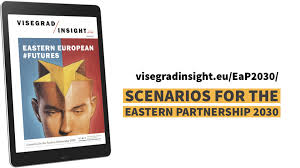Hundreds of people in Minsk protested against the rule of Belarusian President Alexander Lukashenko in the largest opposition demonstration of the year. They denounced the authoritarian rule of Lukashenko, who is seeking a sixth term in office in upcoming presidential elections, Euronews reports.
In the absence of effective state responses, civic groups in Belarus, Russia, and Azerbaijan are tackling the COVID-19 pandemic. Their efforts are drawing strong public support and sparking previously unlikely collaborations, writes Sofya Orlosky, @smorlosky Senior Program Manager for Eurasia at Freedom House:
In Belarus, Russia, and Azerbaijan, the weight of the crisis fell on civic groups already worn out by decades of government crackdowns. Yet they have responded effectively, in ways that have drawn disparate groups together, and which at times have prompted limited collaboration with government agencies. These visible responses to COVID-19 offer the promise of transcending the “government failure” model for more sustainable public-private partnerships, where civic groups become accepted as a fully capable and complementary part of society.
 The Eastern Partnership has a chance of becoming a self-contained actor if civil society leaders of the region succeed in harnessing the “power of the streets” in order to create effective democratic institutions, according to a new analysis. What does the future bring in terms of European aspirations for Ukraine and other Eastern Partnership (EaP) countries? This is the question that leading analysts from the EU and EaP region tried to answer in the report Eastern European Futures. Scenarios for the Eastern Partnership 2030, which proposes a number of scenarios, including:
The Eastern Partnership has a chance of becoming a self-contained actor if civil society leaders of the region succeed in harnessing the “power of the streets” in order to create effective democratic institutions, according to a new analysis. What does the future bring in terms of European aspirations for Ukraine and other Eastern Partnership (EaP) countries? This is the question that leading analysts from the EU and EaP region tried to answer in the report Eastern European Futures. Scenarios for the Eastern Partnership 2030, which proposes a number of scenarios, including:
- Russian Hegemony Revisited: With the world economy keeping its demand for oil and gas high and lacklustre efforts to stimulate ‘green’ alternatives, Russia manages to advance some of its military and economic modernisation despite the continuation of the West’s sanctions regime. Russia goes on the offensive and implements new measures to project its power and influence over immediate neighbours once again. Amid tension over the Eastern Partnership, it provokes yet another conflict that undercuts ambitious plans for association and integration with the EU.
- Civic Emancipation: The emancipatory power of civil society to define, defend and demand changes in society becomes a key future of the Eastern Partnership region. It follows a global rise of popular protest movements with a discernible impact on the political process across the world. People in the streets or ‘people power’ is what drives an agenda of greater prosperity, access to education and expanded economic opportunity. Although this is based on a domestic, bottom-up driver of activism, to some degree independent from foreign actors and external variables, this trajectory is characterised by a stagnant and distracted West and an ineffective or disengaged EU.
 But what are the scenarios for Ukraine in terms of its relations with the EU? Sergiy Gerasymchuk asks in Visegrad Insight, a partner of the National Endowment for Democracy (NED):
But what are the scenarios for Ukraine in terms of its relations with the EU? Sergiy Gerasymchuk asks in Visegrad Insight, a partner of the National Endowment for Democracy (NED):
- Integration without membership: For Ukraine, there are both attractive and unacceptable scenarios. The attractive one, even if it does not meet Ukraine’s expectations in full, could bear certain advantages, while materialisation of that unacceptable would mean a total loss of sovereignty.
- Pivot to Moscow: Next potential scenario is Russian hegemony in the region, which is possible under the condition that Moscow manages to successfully overcome the economic crisis, and oil and gas market situation stabilises. This will enable Russia to use its petrodollars against neighbouring countries by capturing their strategic sectors of the economy, bribing government officials, and establishing full-scale control.
- Setting hope on civil society: Finally, the most encouraging seems to be the scenario where civil society in the Eastern Partnership countries plays a pivotal role. The Eastern Partnership has a chance of becoming a self-contained actor if civil society leaders of the region succeed in harnessing the “power of the streets” in order to create effective democratic institutions, establish strong ties between the EaP countries, and implement own infrastructure and energy projects for the sake of deeper regional integration.







